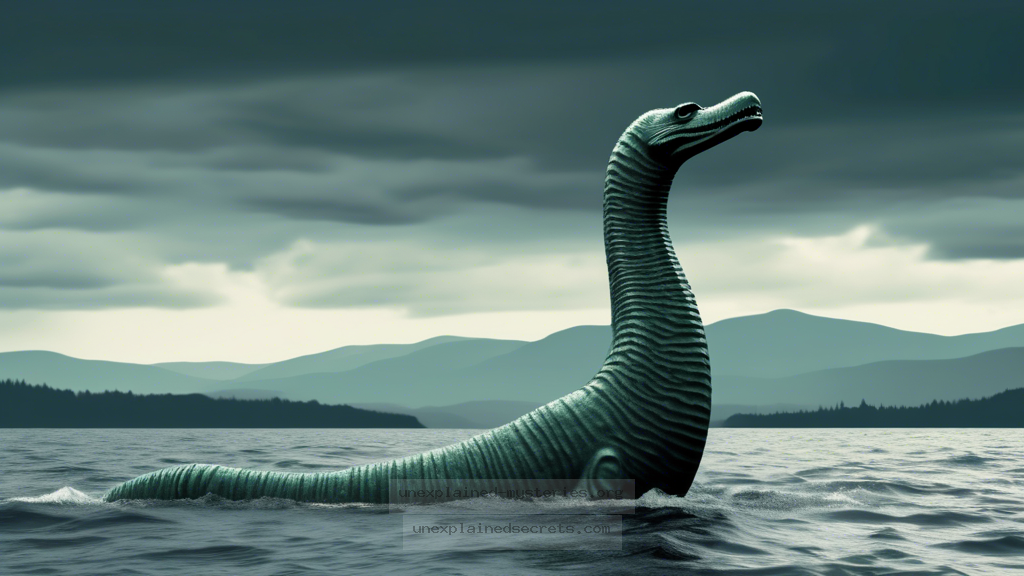Could Sonar Technology Finally Uncover the Secrets of the Loch Ness Monster?
Could Sonar Technology Finally Uncover the Secrets of the Loch Ness Monster?
The Loch Ness Monster, affectionately known as “Nessie,” has captivated the imaginations of people worldwide for decades. This legendary creature, said to inhabit the deep waters of Loch Ness in Scotland, has sparked countless expeditions, theories, and a wealth of both belief and skepticism. One of the most intriguing aspects of the ongoing search for Nessie is the use of advanced sonar technology. But the question remains: could sonar technology finally uncover the secrets of the Loch Ness Monster? This exploration dives deep into the mysteries surrounding sonar detections, historical sightings, and the implications of modern technology in the quest for evidence.
Historical Context of the Loch Ness Monster
The legend of the Loch Ness Monster dates back to ancient times, with the first recorded sighting in 565 AD by Saint Columba, who described encountering a “water beast.” Over the centuries, reports of sightings have varied from vague descriptions to detailed accounts, with many claiming to have seen a large creature resembling a plesiosaur. The most famous photograph, known as the “Surgeon’s Photo,” taken in 1934, fueled the frenzy surrounding Nessie. However, it was later revealed to be a hoax, which only added to the legend’s allure.
The fascination with Nessie reached its peak in the 20th century, leading to numerous investigations, including the famous Loch Ness Investigation Bureau (LNIB) established in the 1960s. These early efforts primarily relied on eyewitness accounts and rudimentary photographic evidence. However, as technology advanced, researchers began to employ sonar, a method that promised more scientific scrutiny.
Understanding Sonar Technology
Sonar, an acronym for Sound Navigation and Ranging, is a technology that uses sound waves to detect and locate objects underwater. This method has been primarily used in maritime navigation and fishing, but its application in cryptozoology, particularly in the search for Nessie, is intriguing. The basic principle involves sending out sound pulses and measuring the time it takes for the echoes to return after bouncing off an object.
There are two main types of sonar: active and passive. Active sonar emits sound waves and listens for their echoes, while passive sonar only listens for sounds made by objects in the water. In the context of the Loch Ness Monster, active sonar has been used in several expeditions to search for large, unidentified forms beneath the loch’s surface.
Notable Sonar Expeditions in Loch Ness
Several significant sonar expeditions have attempted to uncover the mysteries of Loch Ness. One of the most notable was conducted by the “Nessie Hunt” in 1987, which utilized a sophisticated sonar system known as “the sonar sweep.” This multi-beam sonar system scanned the entire loch, resulting in a significant echo that many believed could be Nessie. However, further investigation revealed that the echo was likely caused by shoals of fish or underwater structures.
In 2003, another sonar survey called the “Loch Ness Project” employed a more advanced sonar device capable of producing high-resolution images of the loch’s bottom. This expedition, led by Dr. Neil Gemmell, aimed to capture any anomalous shapes that could potentially be linked to the legend of Nessie. Although the survey provided valuable geological insights, no definitive evidence of a large creature was discovered.
Core Concepts: Sonar Data Interpretation
Interpreting sonar data is a complex process that requires expertise and careful analysis. When sonar detects an object, it produces a visual representation of the underwater landscape, often resembling a topographical map. Anomalies, such as unusual shapes or densities, can indicate the presence of a large object.
However, interpreting these anomalies is not straightforward. Many factors can lead to false positives, including underwater debris, geological formations, and schools of fish. Therefore, while sonar technology offers a promising avenue for exploration, the results must be viewed with a critical eye and corroborated with other forms of evidence.
Practical Implications of Sonar in Cryptozoology
The implications of using sonar technology in the search for cryptids like the Loch Ness Monster are profound. Sonar can reveal underwater structures, geological formations, and potential hiding spots for large creatures. By understanding the ecology of Loch Ness, researchers can formulate better hypotheses about what might inhabit its depths.
Moreover, sonar technology could serve as a non-invasive method to study the loch’s ecosystem. For instance, researchers can monitor fish populations, water quality, and the overall health of the loch without disturbing its natural habitat. This ecological approach may provide insights that help in the search for Nessie while promoting conservation efforts.
Alternative Perspectives: Skepticism and Scientific Inquiry
While sonar technology has opened new avenues for exploration, skepticism remains a significant part of the Loch Ness narrative. Many scientists argue that the lack of concrete evidence after decades of investigation suggests that the Loch Ness Monster may not exist. Skeptics often point to the numerous hoaxes, misidentifications, and the psychological phenomenon known as pareidolia—where people see familiar patterns in random stimuli—as explanations for the sightings.
Furthermore, the ecological factors of Loch Ness should not be overlooked. The loch is home to a variety of wildlife, and many sightings could simply be attributed to known species, such as otters, seals, or large fish like sturgeons. This perspective emphasizes the importance of maintaining scientific rigor in the search for cryptids.
Common Misconceptions about Loch Ness and Sonar Technology
One of the most common misconceptions about sonar technology in relation to the Loch Ness Monster is the belief that it can definitively prove or disprove the creature’s existence. While sonar can provide valuable data, it cannot offer conclusive proof on its own. Additionally, many assume that sonar can easily detect large creatures in the depths; however, the reality is that environmental conditions and the complexity of the underwater landscape complicate detection efforts.
Another misconception is that sonar technology is infallible. In fact, sonar is often subject to interference from various factors, including water temperature, salinity, and the presence of other underwater structures. These factors can distort the sonar readings, leading to inaccurate conclusions.
Best Practices for Investigating the Loch Ness Monster
For those interested in investigating the Loch Ness Monster, adopting a multifaceted approach that combines various investigative methods is essential. Here are some best practices to consider:
- Utilize a Combination of Technologies: Employ sonar in conjunction with other technologies, such as infrared cameras and underwater drones, to gather comprehensive data.
- Collaborate with Experts: Work with marine biologists, ecologists, and sonar technicians to ensure a scientifically rigorous approach.
- Document Everything: Keep detailed records of all findings, hypotheses, and encounters to build a comprehensive database for future researchers.
- Engage with the Local Community: Listen to the stories and insights of local residents, as they may have valuable information or experiences related to sightings.
Future Developments in Loch Ness Research
The future of Loch Ness research looks promising with advancements in technology. Innovations in sonar technology, such as 3D acoustic imaging and AI-based data analysis, hold the potential to revolutionize the way researchers explore the loch. These technologies may help create more accurate and detailed maps of the underwater environment, making it easier to identify anomalies.
Additionally, ongoing genetic research, such as environmental DNA (eDNA) sampling, is gaining traction. This method involves analyzing water samples for genetic material shed by organisms, which could provide insights into the biodiversity of Loch Ness without the need for direct observation. If a creature similar to Nessie exists, eDNA could potentially reveal its presence without needing to capture or spot it.
Conclusion: The Ongoing Mystery of Nessie
The search for the Loch Ness Monster continues to be a blend of science, folklore, and adventure. While sonar technology offers a promising tool for exploration, it is essential to approach the findings with critical thinking and a healthy dose of skepticism. The legacy of Nessie endures, fueled by a combination of historical accounts, modern technology, and the enduring human desire to uncover the unknown. Whether Nessie is a figment of our collective imagination, a misidentified species, or a creature yet to be discovered, the quest for answers keeps the mystery alive.
As researchers continue to explore the depths of Loch Ness, the intersection of science and myth remains a captivating narrative, beckoning both believers and skeptics to join in the search for the truth.
Other Articles
Recent Posts
- What Happened to Flight MH370? The Conspiracy Theories That Still Haunt Us
- What Secrets Lurk Within the Walls of the Infamous Trans-Allegheny Lunatic Asylum?
- What Evidence Supports the Existence of Bigfoot in the Pacific Northwest?
- What Happened to the Indus Valley Civilization? Unraveling the Mysteries of Ancient Urban Life
- Can Telepathy Be Scientifically Proven Through Laboratory Evidence?







